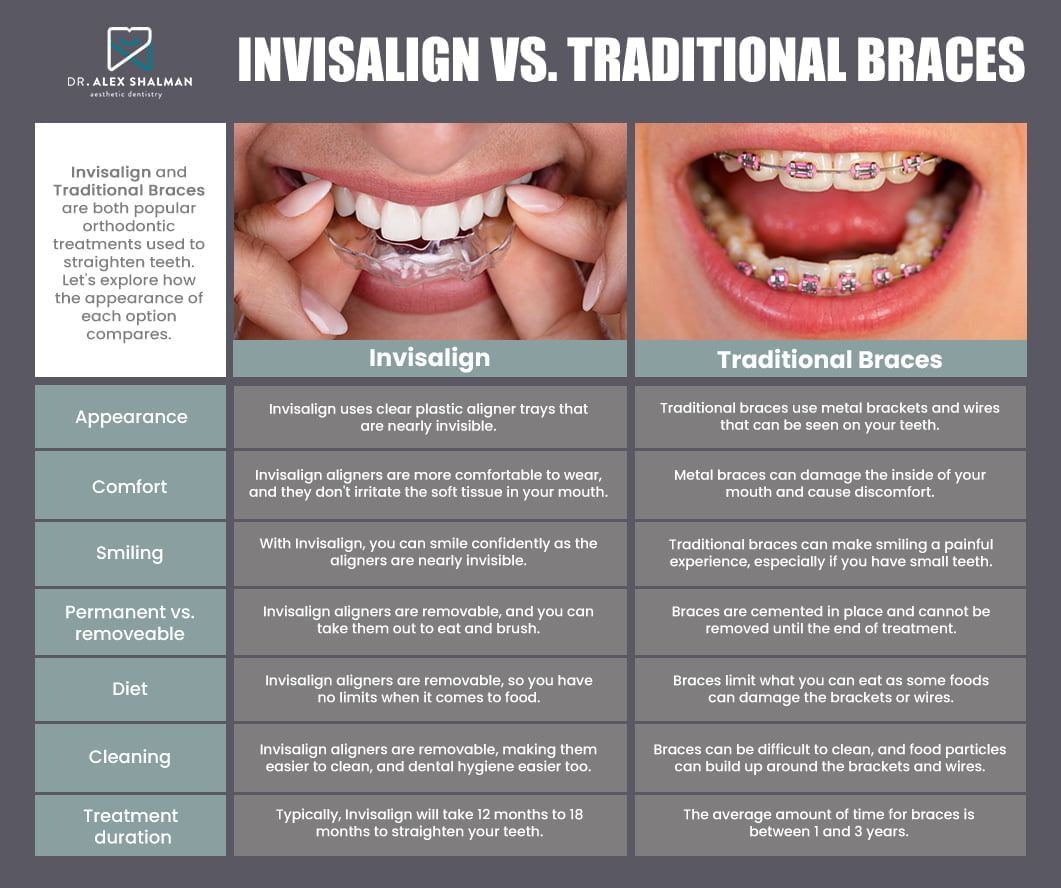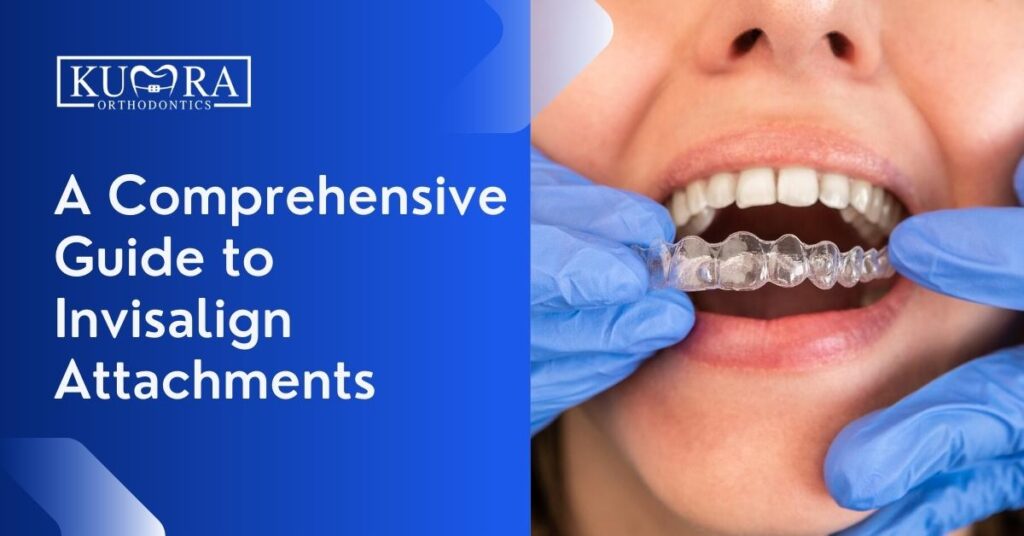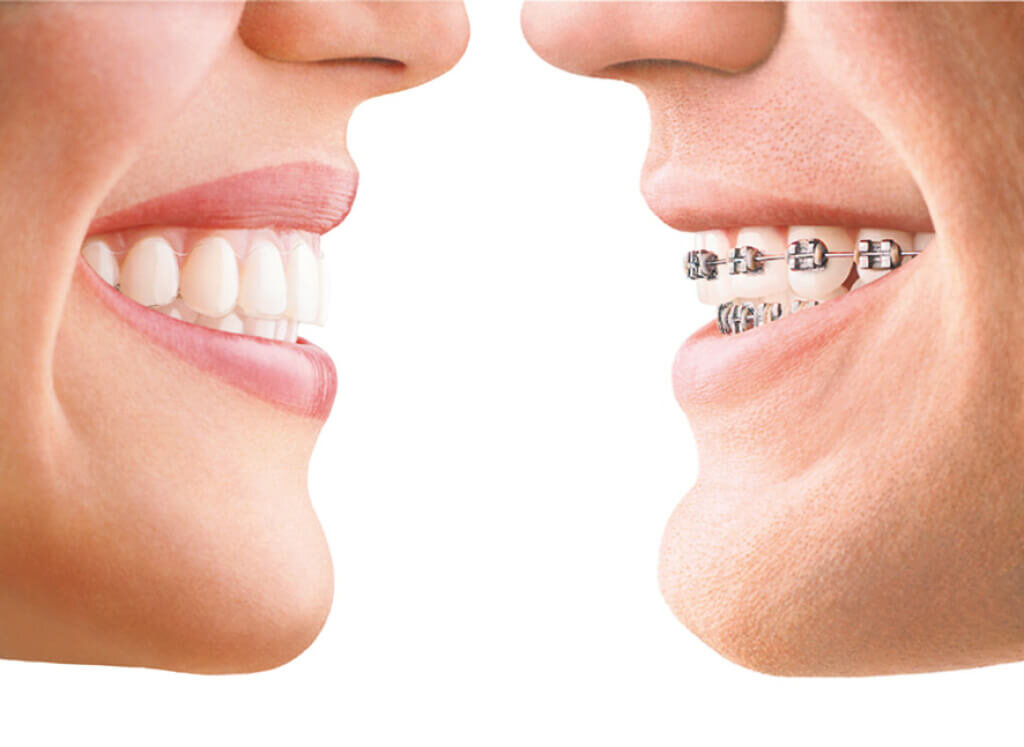Preserving Oral Health While Making Use Of Invisalign: Tips for a Smooth Experience
Preserving Oral Health While Making Use Of Invisalign: Tips for a Smooth Experience
Blog Article
Invisalign vs. Standard Braces: Which Alternative Is Right for You?
When thinking about orthodontic treatment, the choice between Invisalign and typical dental braces presents several crucial factors that merit careful examination. Invisalign provides a very discreet choice with detachable aligners, while traditional braces offer an extra visible yet effective service for serious misalignment.
Summary of Therapy Options

In comparison, conventional dental braces consist of metal braces and wires that are adhered to the teeth. This method applies continual stress in time to accomplish positioning. While reliable for complex orthodontic problems, standard dental braces require normal sees for adjustments and can position difficulties in keeping dental hygiene due to the trouble of cleaning around cords and braces.
Both options have their merits, and the choice typically pivots on details oral conditions, way of life choices, and individual conformity. Inevitably, seeking advice from an orthodontic specialist is crucial for identifying the most suitable treatment plan tailored to private needs. Understanding the nuances of each option can considerably affect the general success of orthodontic therapy.
Aesthetic Factors To Consider
A substantial variable affecting the selection in between Invisalign and standard braces is the aesthetic allure each therapy supplies. Invisalign aligners are crafted from clear plastic, making them basically undetectable when used. This discreet look is specifically interesting adults and teenagers who might really feel uneasy about their orthodontic therapy. The capability to maintain an all-natural smile throughout the placement procedure can considerably boost the individual's confidence in professional and social setups.
In contrast, typical braces contain metal brackets and cords, which can be a lot more noticeable. While improvements in orthodontic technology have brought about the advancement of smaller sized brackets and tinted elastics, typical braces still preserve an even more noticeable account. For some people, the visibility of braces might hinder them from looking for necessary treatment.
Eventually, the selection in between Invisalign and conventional dental braces may depend upon individual choices regarding visual appeals. Patients who focus on discretion frequently favor Invisalign, while those that are much less concerned regarding presence might choose conventional braces. Comprehending the visual implications of each option is vital for making an educated choice that straightens with one's way of living and choices.
Convenience and Convenience

In regards to convenience, Invisalign aligners are removable, enabling clients to appreciate their preferred foods without constraint and keep optimum dental health. Brushing and flossing visit the website are simplified, as the aligners can be taken out during these routines, whereas traditional braces call for mindful steering around brackets and cables.
In contrast, conventional dental braces require regular modifications, making them less hassle-free for those with hectic schedules. Overall, the convenience and convenience of Invisalign make it an enticing option for several individuals looking for orthodontic treatment.
Therapy Duration and Performance
While both Invisalign and standard dental braces work in remedying oral imbalances, the duration of therapy can differ significantly between both alternatives. Typically, Invisalign therapy can take anywhere from 12 to 18 months, depending on the intricacy of the instance. The clear aligners function by gradually moving teeth into their wanted positions, and routine follow-ups with an orthodontist help make certain progress stays on course.
On the other hand, conventional braces frequently need a longer dedication, usually ranging from 18 months to three years. This is because of their set nature and making use of wires and brackets, which can be a lot more reliable for extreme imbalances and complex cases (Invisalign). The therapy efficiency of traditional dental braces is well-documented, as they allow for accurate changes and greater control over tooth activity
Ultimately, the option in between Invisalign and standard dental braces may hinge on both the look at this site anticipated treatment duration and the specific dental concerns handy. Consulting with an orthodontist is crucial, as they can offer tailored recommendations based upon specific demands, making certain the picked approach lines up with preferred results and timeframes.
Price Comparison and Insurance Coverage Choices
Cost plays a substantial duty in the decision-making process for individuals taking into consideration orthodontic therapy, whether choosing Invisalign or conventional dental braces. Typically, the expense of Invisalign ranges from $3,000 to $8,000, while standard dental braces usually cost in between $2,000 and $6,000. Elements influencing these expenses include the intricacy of the situation, the duration of therapy, and geographical location.
Many oral insurance plans supply partial insurance coverage for orthodontic treatments, however the specifics can differ extensively. Typically, standard dental braces might be more often covered by insurance policy strategies contrasted to Invisalign, which some insurance providers categorize as a cosmetic treatment.
In addition, numerous orthodontic practices provide flexible layaway plan, making both treatment choices extra accessible. Clients must ask about possible funding choices and price cuts for in advance settlements. Reviewing the complete price, consisting of insurance policy advantages and repayment strategies, is necessary for making an educated choice that lines up with both aesthetic preferences and spending plan factors to consider.

Final Thought
In recap, the option between Invisalign and typical dental braces hinges on numerous variables, including aesthetic preferences, convenience, therapy period, and price. Invisalign offers a very discreet, detachable choice that promotes oral health and nutritional flexibility, while standard braces may be preferable for complex dental problems and typically come at a lower rate point. Eventually, appointment with an orthodontist is vital to assess private circumstances and figure out one of the most appropriate treatment alternative for attaining optimal oral placement.
When considering orthodontic treatment, the selection in between Invisalign and conventional dental braces offers several essential aspects that warrant mindful evaluation.Comparing Invisalign and standard dental braces discloses distinctive treatment options for orthodontic adjustment.While both Invisalign and standard dental braces are efficient in dealing with oral imbalances, the period of therapy can differ dramatically in between the 2 alternatives.Price plays a substantial duty in the decision-making procedure for people thinking about orthodontic treatment, whether choosing for Invisalign or standard braces.In summary, the choice between Invisalign and traditional dental braces pivots on several aspects, including aesthetic preferences, convenience, therapy period, and cost.
Report this page